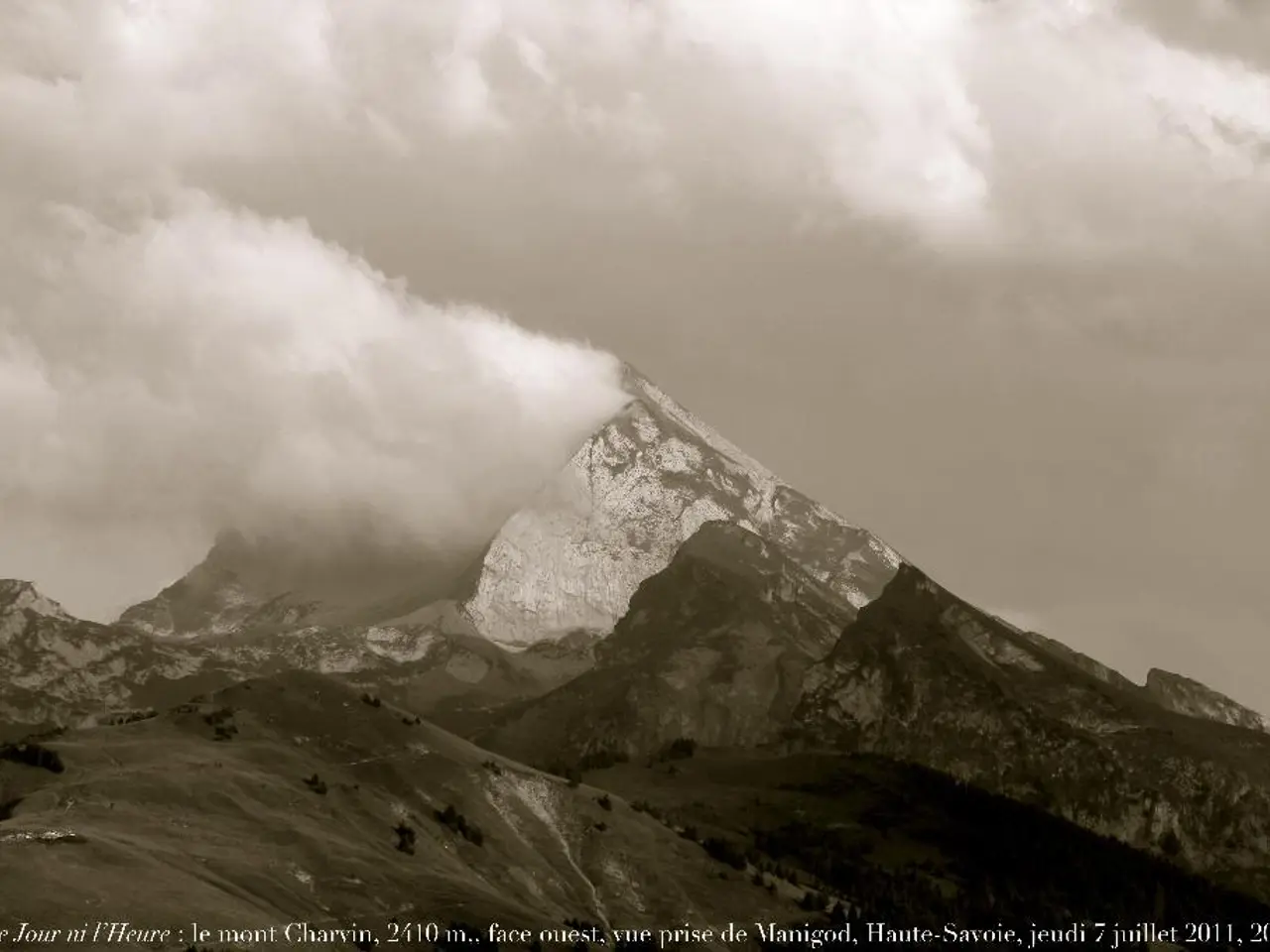Devastating flash floods and landslides have claimed the lives of over 250 individuals in Pakistan and India. - Torrential rain causes over 250 fatalities in Pakistan and India through flash floods and landslides
Heavy rains and flash floods have been causing destruction in Pakistan and India, with thousands affected and hundreds dead in recent weeks. The monsoon season, which typically brings much-needed rainfall to the region, has been particularly intense this year, leading to a series of devastating events.
In a single day, at least 180 people died in the Pakistani province of Khyber Pakhtunkhwa due to flash floods. Elsewhere in the region, another 60 people lost their lives in a flash flood in the Indian part of Kashmir. The affected area in India is on a Hindu pilgrimage route, adding to the tragedy.
Historically, flash floods during monsoon seasons in Pakistan and India have been frequent, intense, and increasingly devastating. In 2025, Pakistan experienced one of its deadliest monsoon seasons with over 460 deaths from flash floods and landslides in less than two weeks. Across India and Pakistan combined, at least 1,860 people died in the 2025 monsoon season due to flash floods, landslides, and urban inundations.
Pakistan faces annual flash floods from June to September, often described as a "doomsday scenario" due to their suddenness and destructive power. The country's urban areas, such as Islamabad, Rawalpindi, and Lahore, suffer additional flood risks due to crumbling water infrastructure and blocked waterways. In Gilgit-Baltistan, glacial lake outburst floods have wiped out villages, signalling the contribution of melting glaciers linked to climate change.
Climate change is considered a major factor exacerbating these floods by intensifying rainfall patterns and glacial melt. Experts say that weather extremes and frequency are increasing worldwide due to climate change, making these disasters more common and more severe.
The regional weather office in India has warned of heavy rain and further floods, and access to the disaster area in India has been difficult. Rescue teams and soldiers have been sent to the region, but bodies are still being recovered from the mud and debris. In Gilgit-Baltistan, Pakistan, a makeshift kitchen where over a hundred pilgrims were staying was destroyed by the flash floods.
In addition to the loss of life, the floods have caused massive displacement and destruction of infrastructure. In the Kishtwar district of India, over a hundred people have been admitted to a hospital, and another 80 are missing in the Indian part of Kashmir after a flash flood.
Indian Prime Minister Narendra Modi has promised all possible support to those affected by the flood, and the disaster management authority in Khyber Pakhtunkhwa reported five crew member deaths due to a helicopter crash. The crash occurred in the Mohmand district of Pakistan and was caused by bad weather.
This is not the first major flooding disaster in the region this month. Another major flooding disaster in India this month has resulted in the death toll believed to be over 70, but not yet confirmed. Heavy rains are common in Pakistan during the monsoon season, but this summer's monsoon has been described as "unusual."
The Himalayan town of Dharali in India was buried under mud by floods last week, and the disaster area in Gilgit-Baltistan, Pakistan, was not mentioned in this paragraph. The floods have caused five more deaths in the region of Gilgit-Baltistan in northern Pakistan, and at least 28 more people were injured in Pakistan during the monsoon season.
The increasing frequency and severity of these floods call for improved water infrastructure, disaster preparedness, and climate adaptation strategies to reduce future losses. Climate change is a critical factor contributing to the intensification of precipitation extremes and glacial melting, raising flood risks and impacting millions annually.
- The water supply system in urban areas of Pakistan, such as Islamabad, Rawalpindi, and Lahore, needs improvement due to crumbling infrastructure and blocked waterways, exacerbating flood risks during the monsoon season.
- Climate change is a significant driver of the increase in flash floods in Pakistan and India, as it intensifies rainfall patterns and contributes to glacial melt, making these events more common and severe.
- In addition to the loss of life and property, the flooding disasters in Pakistan and India have resulted in significant environmental impacts, such as contamination of water resources and disruptions to the ecosystem.
- The Himalayan region, which straddles Pakistan and India, is particularly vulnerable to climate change, with melting glaciers causing glacial lake outburst floods that can wipe out villages, like what happened in Gilgit-Baltistan, Pakistan.








